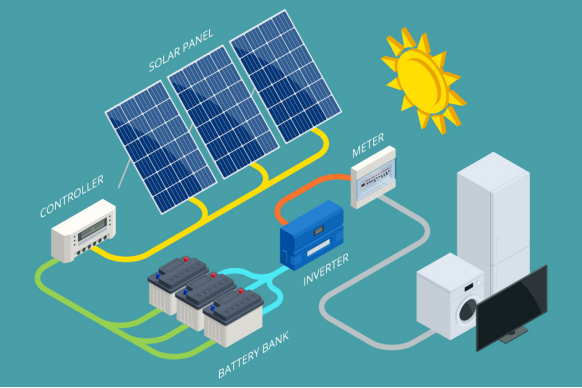Solar panel inverters are available in a variety of sizes. A watt (W) is a unit used to quantify the power of an inverter, just like the power of a solar panel (W). When choosing the best inverter size, the installer will consider the size, the type of solar panel, and any special circumstances of your installation site.
Solar Array Size
The size of your solar array is a major factor in determining the size of your solar inverter. A solar converter with sufficient capacity should convert the DC power from the solar array to AC power. For example, if you build a solar panel system with a DC rating of 5 kW, the inverter should have a power output of 5,000 watts. A capacity array compatible with the particular inverter will be provided on the inverter’s datasheet. There is no value in deploying an inverter that is too large or too small for its specifications.
Environmental Factors
The amount of sunlight that can penetrate the solar array is a main concern for solar inverter installations. However, environmental factors, such as shadows and dust, can have a significant impact on the capacity of a solar inverter. Professionals take these factors into account when calculating the overall output of your solar panel system. You can use your system’s derating factor to estimate the amount of electricity your solar panels will produce in an actual installation.
Sometimes solar panel systems that are shaded, or that face east rather than south, will have a greater derating factor. If the solar panel derating factor is high enough, then the inverter capacity may be lower relative to the size of the array.
Types Of Solar Panels
The location and characteristics of your solar array will determine the size of your solar inverter. The location of a solar array, including the orientation and angle of its installation, will affect the amount of electricity it produces. Different types of solar panels have unique features that need to be considered before purchasing an inverter.
There are four main types of solar panels on the market: they are monocrystalline, polycrystalline, PERC, and thin-film panels. Each has its own advantages and disadvantages. However, users need to install the best solar panel to meet their needs and requirements.
Understanding the DC/AC Ratio
The DC/AC ratio is the ratio of the installed DC capacity to the AC power rating of the inverter. Making the solar array larger than necessary increases the DC-AC conversion efficiency. This allows for better energy harvesting when the yield is lower than the inverter’s rating, which is typically the case throughout the day.
For most designs, a DC/AC ratio of 1.25 is ideal. This is because only 1% of the energy produced throughout the entire photovoltaic (PV) array will have a power level greater than 80%. Combining a 9 kW PV array with a 7.6 kW AC converter will produce the best DC/AC ratio. It will result in the least amount of power loss.
Check for certifications and warranties
Look for solar inverters that have appropriate certifications (such as UL listing) and warranties. This ensures the inverter meets safety standards and provides support in case of any malfunctions.
If you are unsure of the right size solar power inverter for your specific needs, you can consult SUNRUNE, we have qualified solar installers and professionals who can assess your requirements and provide expert advice.
Post time: Jul-04-2023
